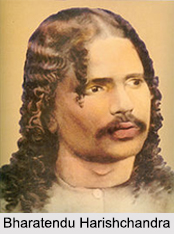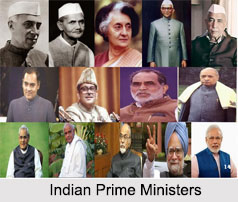 Aruna Ali was a freedom fighter and is widely remembered for hoisting the Congress flag at Bombay during the Quit India Movement. She is known as the `Grand Old Lady` of the Independence Movement. She worked in the worst of slums to offer aid to the poor and the exploited. She had been conferred honour nationally and internationally. She was awarded the Lenin Peace Prize in 1964 and Jawaharlal Nehru Award for International Understanding in 1992.
Aruna Ali was a freedom fighter and is widely remembered for hoisting the Congress flag at Bombay during the Quit India Movement. She is known as the `Grand Old Lady` of the Independence Movement. She worked in the worst of slums to offer aid to the poor and the exploited. She had been conferred honour nationally and internationally. She was awarded the Lenin Peace Prize in 1964 and Jawaharlal Nehru Award for International Understanding in 1992.
Aruna Asaf Ali was born on 1906 into an orthodox Hindu Bengali family. She was the eldest of her siblings. She did her schooling at the Convent of the Sacred Heart in Lahore. She was bought up as an independent child. She considered religion as a fascination to the unknown. She said that offering prayers to an unseen being was a mysterious experience. She was attracted to Catholicism and made up her mind .to become a Roman Catholic nun. Aruna`s Brahmin family was shocked by her decision and in no time she was transferred from Lahore Convent to a Protestant school in Nainital.
After her education she took to teaching to save enough money to pay for her higher education in England. With her western education, she developed interest in English Literature and was fond of fashionable clothes. Asaf Ali who was a successful barrister and a member of the Congress Party proposed to Aruna. She said that without her parent`s consent she couldn`t accept his proposal. Her father was enraged at the suggestion and refused to give his consent as Asaf Ali belonged to a different faith and he was 22 years senior to Aruna in age. He was 41 and Aruna only 19. In spite of her father`s disagreement they married under Muslim rites. After which, Aruna was named Kulsum Zamani. The unorthodox marriage created quite a storm. As a result, her relatives disowned her but she had no regrets. Her husband loved and respected her.
Asaf Ali took active interest in Congress programmes. Influenced by Mahatma Gandhi and other leaders of the Indian National Congress, she joined the civil disobedience movement of 1930. Aruna`s first venture into active politics was triggered off with the arrest of Asaf Ali during the Salt Satyagraha. Aruna joined the band of Satyagrahis and was arrested. She was sent to Lahore jail to serve a one-year prison term. She was held for participating in the 1932 movement and was held in the Delhi district jail. There she organized women political prisoners to protest against the heartless attitude of jail authorities. She was sent to Ambala, which had only a male prison and Aruna had to live in solitary confinement.
On her release from there, she again plunged into the social life of the capital. When she returned to politics, she concentrated on socialism rather than Congress doctrines. She wanted to enlighten the downtrodden masses of India who were the victims of caste hierarchy, poverty and gender oppression. She saw religious representation in the Congress creed and she was of the view that Nationalism, was a holy concept with Indians, and so that they expressed their patriotic feelings in religious symbolism. She criticized the term Ram Rajya and said Hindus go to jail as if they were going to a pilgrimage. Her liberal upbringing as a Brahmo and later marriage to a Muslim had made her aware of the feelings of Muslims and she said that it is not Ram Rajya but the reign of Akbar, that should be set as a target and guide. She did not give much care to the ritual of spinning as she said that there was no spiritualism in spinning and it was only a means to help the poor . She had heated arguments with Gandhiji over silk saris and she termed "Congress Puritanism".
Asaf Ali who was a prominent Congress leader took Aruna with him to attend the 45th session of the Congress in Bombay. She became one of the noticeable participants at the meeting. The people were in an explosive mood of do or die. They demanded the British to quit India. As a result the British rulers arrested all prominent Congress leaders, thus hoping to suppress a leaderless people. She wished that the spirit of revolution should not die and so she rushed to the Gowalia Tank Maidan, venue of the Congress session and hoisted the Congress flag as scheduled. The police choked tear gas to disperse the crowd and trampled upon the flag she hoisted. Then she vowed not to rest till India achieved freedom from British rule. The oppression of the people by the alien rulers further hardened her attitude and her rebellion turned into hatred and retaliation.
To organize the resistance movement Aruna came to Delhi from Bombay. The police was desperately looking for her and she went underground to escape capture. The police had announced an award of Rs.5, 000/ - for her capture. But the police failed to capture her. Calcutta was the first city to honor Aruna after her emergence from underground. Her return to Delhi was an occasion rejoiced by her family and friends. After years of struggle and action, the rebel in Aruna had emerged stronger than ever before. She openly differed with leaders like Gandhiji, Nehru and Maulana Azad, but mutual respect and affection did not allow a serious break.
She was against the very concept of Interim Government. When Asaf Ali accepted the Minister ship of Communications, Aruna was unhappy. She made it her mission to work for the women community who were oppressed by men. She wanted women to be emancipated from the clutches of men. She said that only through education that women can be liberated. Aruna wanted to establish a printing and publishing organization to spread intellectual enlightenment. It was thus that the "Link" a weekly journal, and later "Patriot", a daily newspaper, was started.
Aruna Asaf Ali`s health began to deteriorate and as a result she could not actively take up her pet causes - action for women`s advancement, planning for economic justice, role of media, reaffirmation of values in public affairs etc. She passed away in July 1996. She was a living example for all posterity to follow. She would ever live in the heart of all Indians.






